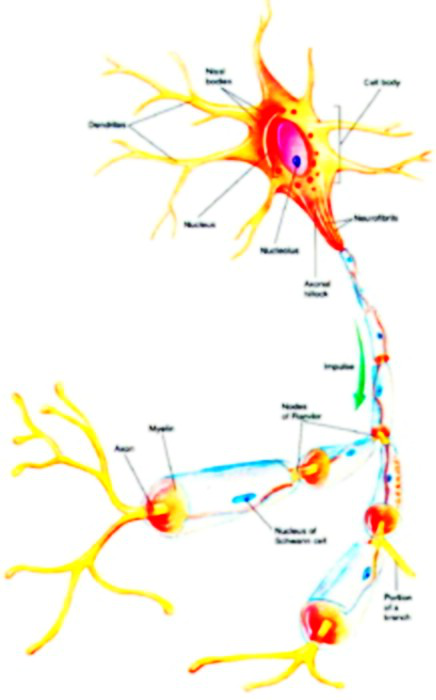- 中文
- 繁體
- 日本語(yǔ)
- ???
- Espa?ol
- ???????
- ???????
- русский
- fran?ais
- Italia
- Deutsch
- Português
- Ti?ng Vi?t
- Bahasa Melayu
- Polski
- Svenska
- Norsk
- l?tzebuergesch
- Bahasa Indonesia
- Ελληνικ?
- Suomi
- Dansk
- ?e?tina
- Nederlands
- Български
- Roman?
- Magyar
- lietuvi? kalba
- latviski
- Eesti keel
- Hrvatski
- Slovensky jazyk
- Sloven??ina
- ?????
- ?????
- Укра?нська
- ?????
- íslenskur
- Српски
- Català
- ????????
Neuroinformatics
Brain-Neural Function Informatics (BNFI)
In recent years, the main research of neuroscience is "understanding the brain, protecting the brain, developing the brain and creating the brain". Understanding the functions and activity mechanisms of the brain is the basis and premise for protecting the brain, developing the brain and then "creating the brain". Since the 1990s, the National Institutes of Health (NIH) and the National Science Foundation (NSF) of the United States and other national institutions have proposed the "Human Brain Project" research, and China has subsequently joined the framework of the project.

Neuroinformatics is an important research field in the Human Brain Project. It studies the carrier form of information in the nervous system, the generation, transmission and processing rules of neural information, and the coding, storage and retrieval mechanism of neural information, and explains the physiological and psychological significance of human brain activities and brain functions. It links the research results of neuroscientists and information scientists on the structure and function of the brain, establishes a neuroinformatics database, retrieves, compares, analyzes, integrates, models and simulates research data on the brain at different levels, draws brain function, structure and neural network maps, reveals the informatics basis for understanding brain activities, and achieves the goal of "understanding the brain, protecting the brain, developing the brain and creating the brain". Brain-Neural function Informatics (BNFI) is an important research field in brain science and an important branch of neuroinformatics. It mainly applies modern information science and technology and methods to study the information flow characteristics of the functional activities of the brain and central nervous system, such as the occurrence mechanism, transmission and conversion rules of information flow during brain functional activities, the expression and characterization of functional information, etc., and then applies it to related fields such as diagnosis of functional brain diseases, brain function compensation, rehabilitation, and development of functional prostheses to achieve the purpose of protecting and developing the brain. The brain-nerve functional activities referred to here include the brain's regulatory functions on the physiological activities, sensations, movements, and immune abilities of various systems of the human body; psychological states (fear, fright, addiction, likes and dislikes, abnormalities, etc.), the occurrence, expression, and tendency of emotions; and also include higher-level brain functional activities such as cognition, learning, consciousness, and thinking. Ifl) The biological content of the biological histology of the brain and nervous system and neurons, such as growth and development, organizational structure, variation, degeneration, and apoptosis, is not within its research scope. It should be said that brain neurological function informatics is not only an important branch of neuroscience and brain science, but also an important branch of information science. It is an interdisciplinary science between information science and brain neuroscience, and a concentrated embodiment of information science infiltrating neurobiology. Brain neurological function informatics includes both significant basic research, such as the generation and regulation mechanism of brain function, and rich and broad application topics, such as the diagnosis and rehabilitation of brain neurological functional diseases, compensation of sensory function and artificial prosthesis, replacement of motor control and action function, and brain-computer interface system.
?
The difference between brain nerve function informatics and neuroinformatics is that it emphasizes the combination of brain function research and its clinical and practical applications with technologies and methods such as brain nerve system functional state information detection and information processing analysis, while neuroinformatics focuses on the neurobiological and neuromolecular biological mechanisms and activity patterns of brain nerve information activities and processes. The research fields of brain nerve function informatics mainly include the extraction and recognition of characteristic information of brain functional activity states and the research on related information processing technologies and experimental methods; informatics methods for the prediction, characterization, diagnosis and evaluation of abnormal brain functions (abnormalities, bad tendencies, latent diseases, mental illnesses) and degenerative diseases; brain function compensation, rehabilitation and regulation technologies for brain functional diseases and disorders based on information science and technology; brain-computer interface (BCI or BMI) technology and the development of functional prostheses; learning, cognitive, and emotional disorder mechanisms and informatics rehabilitation assistance technologies, etc. Wan--------
The origin of brain neurofunctional informatics can be traced back to the study of brain functional area zoning by Western phrenologists in the 18th century, but its real formation has only been in the past decade. However, it has attracted the interest of more and more psychologists, biologists, information scientists, brain neuroscientists, and biophysical scientists, who have continuously joined the research in this field. Its research content is very extensive, ranging from psychology to information science, from children's learning disabilities to the development and training of brain functions, from clinical diagnosis to rehabilitation assistive technology, from brain-computer interface to various functional prostheses, from learning, cognition to psychological counseling, etc. In terms of the current main research hotspots, they can be summarized into the following aspects.
Zheng Chongxun, Pei Xiaomei